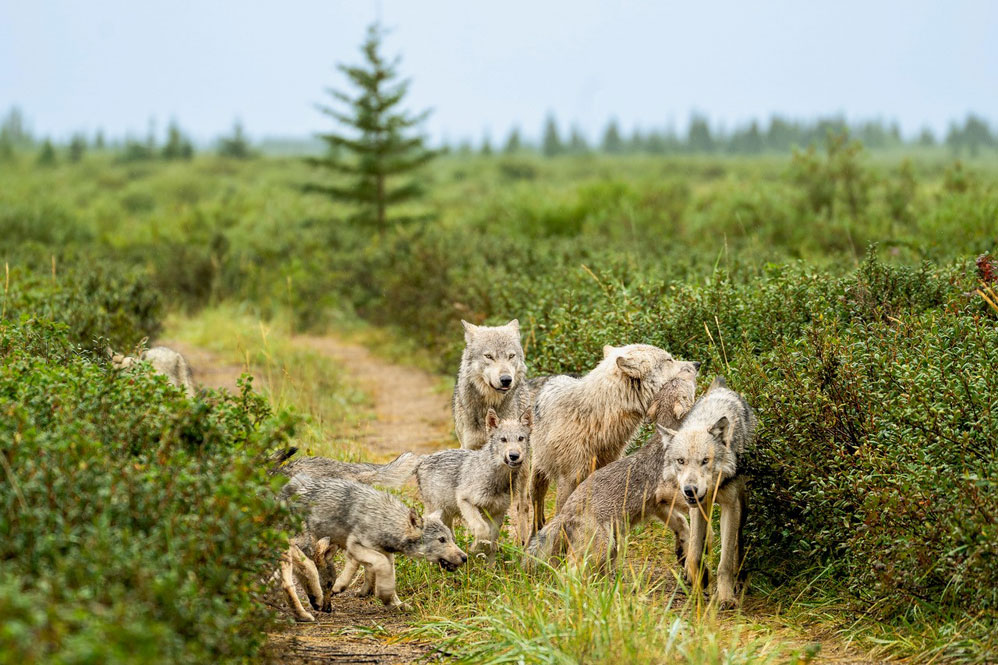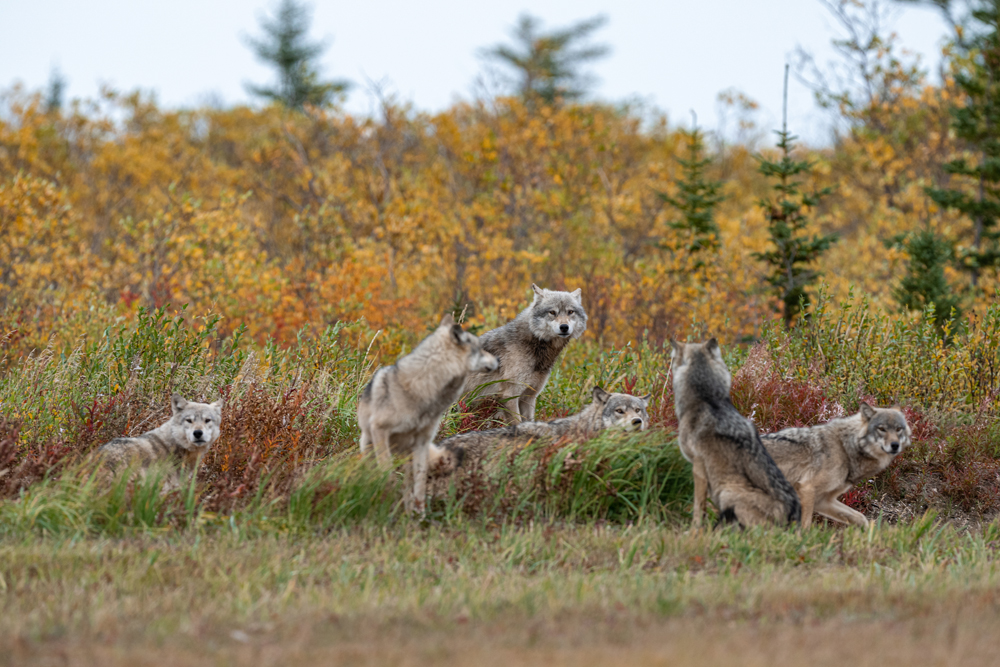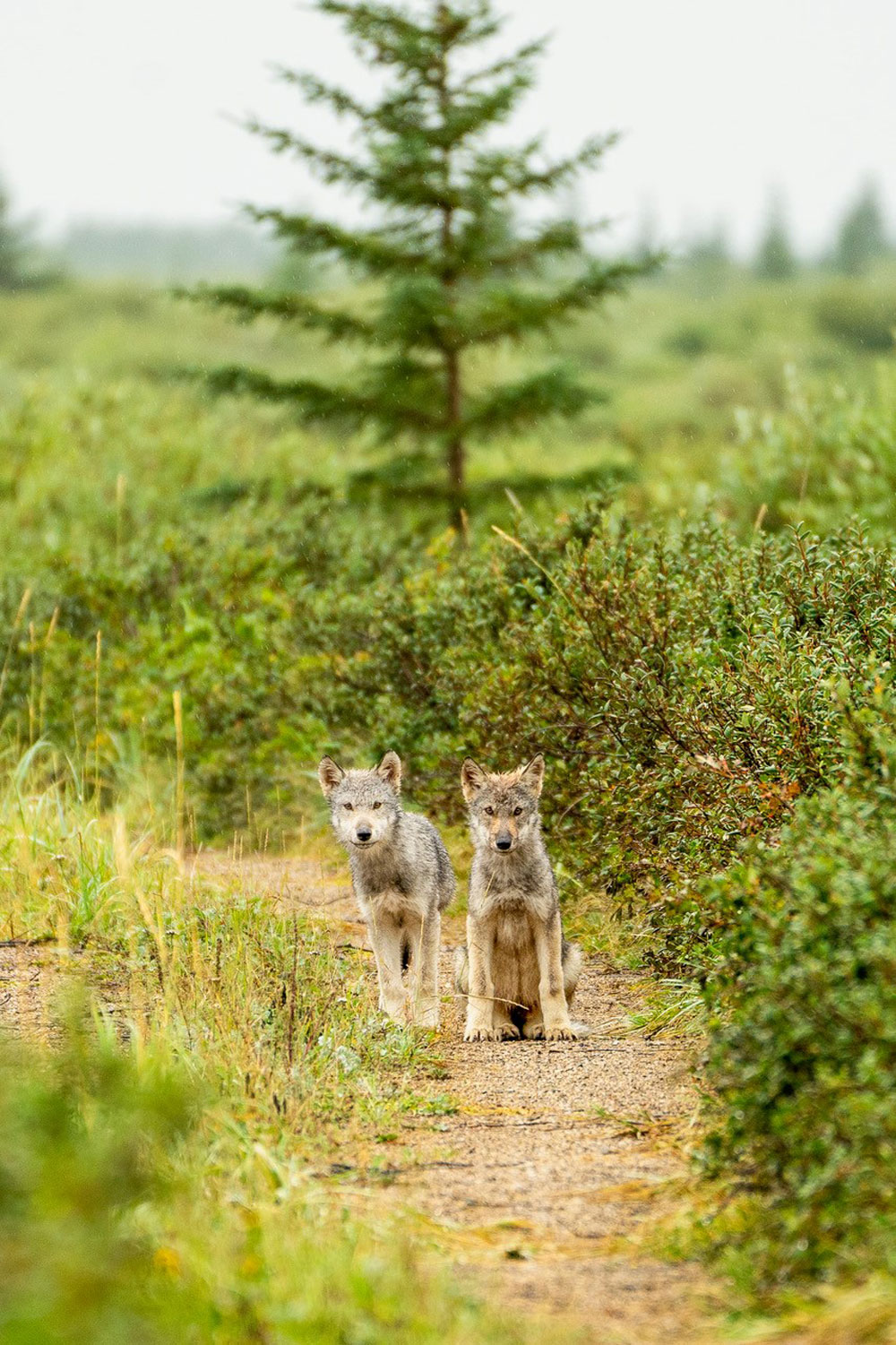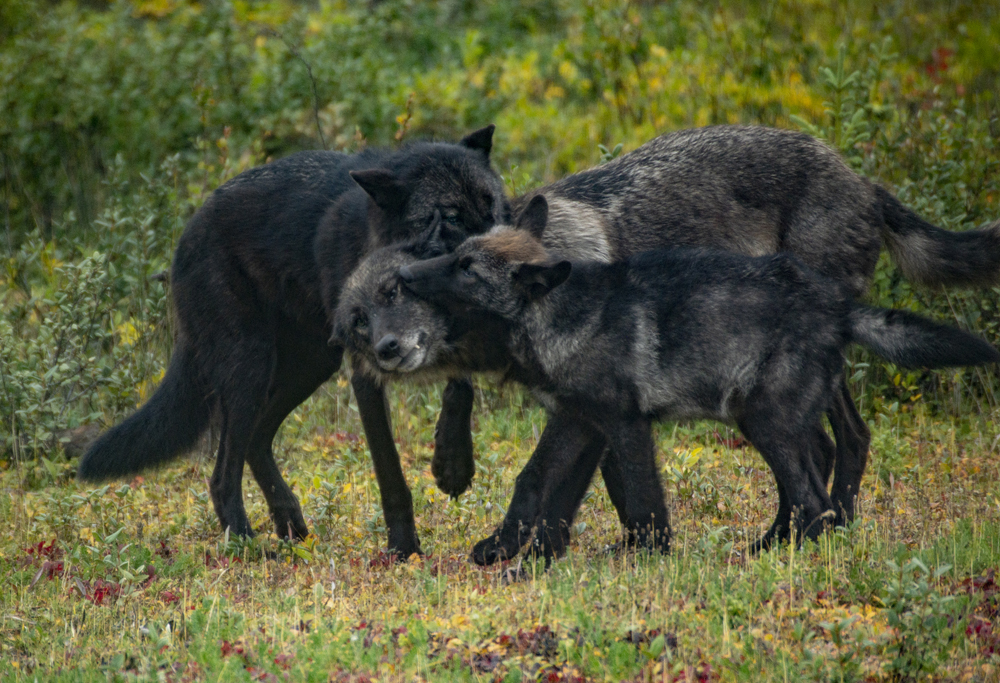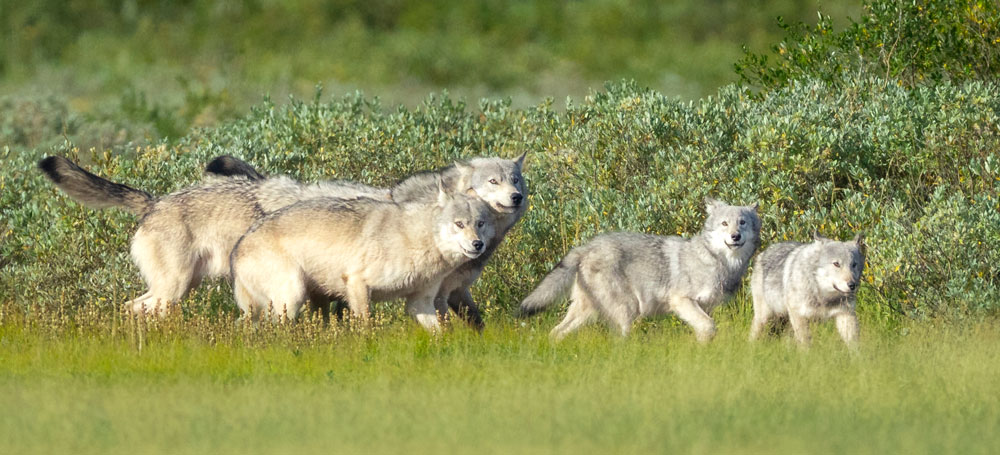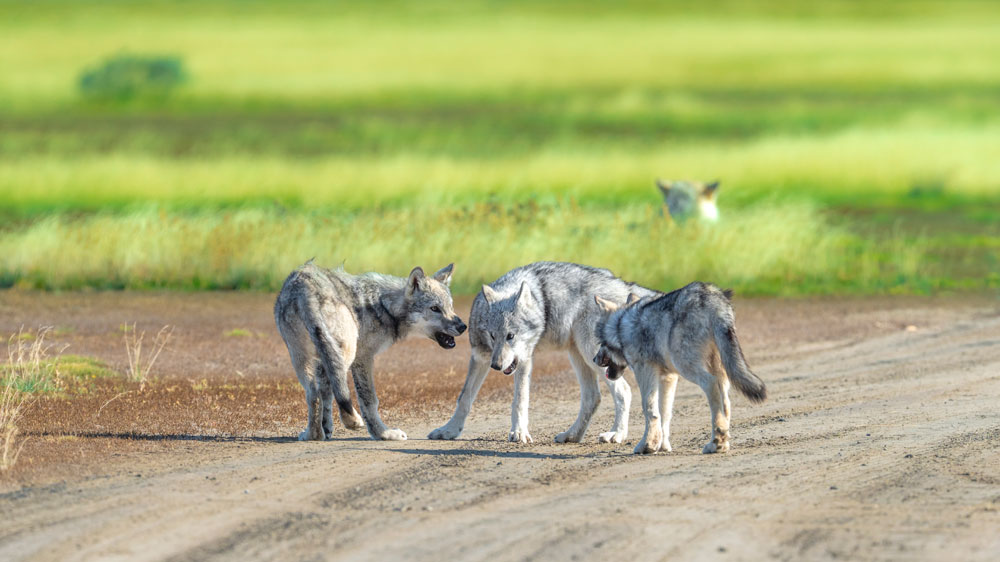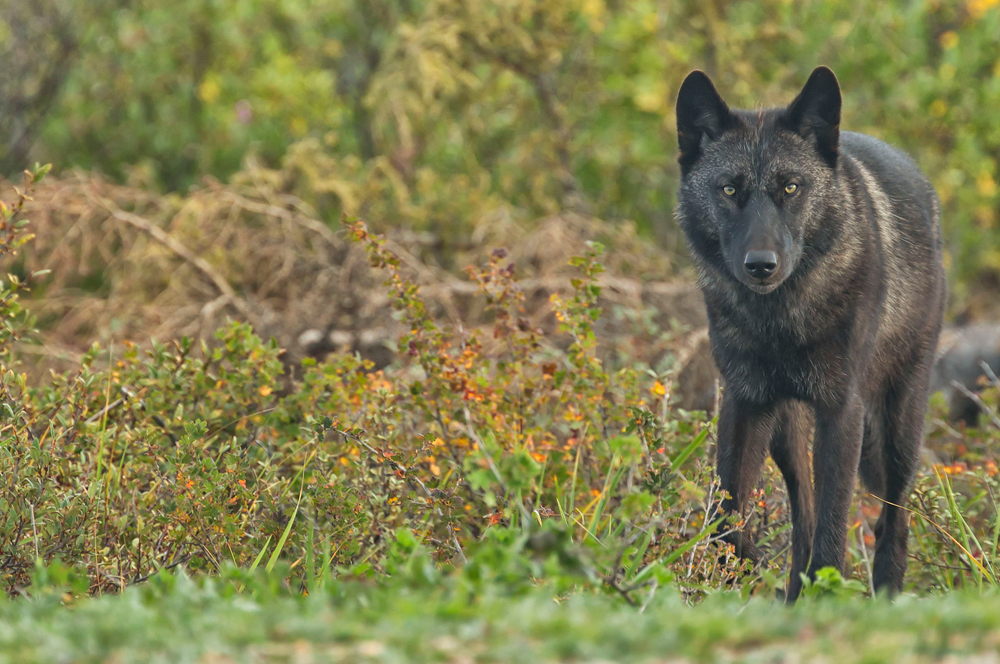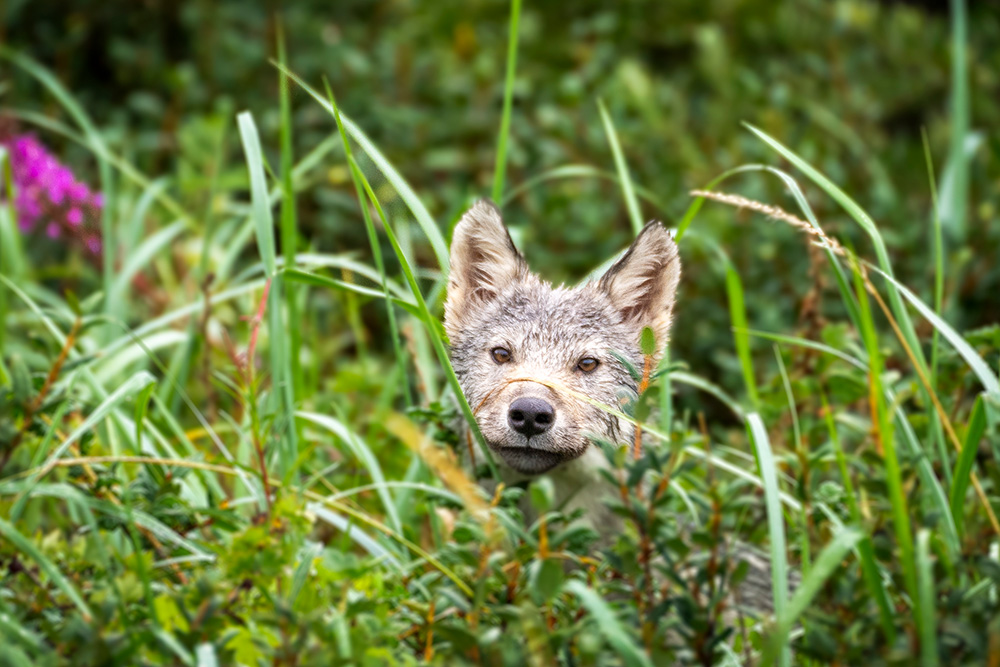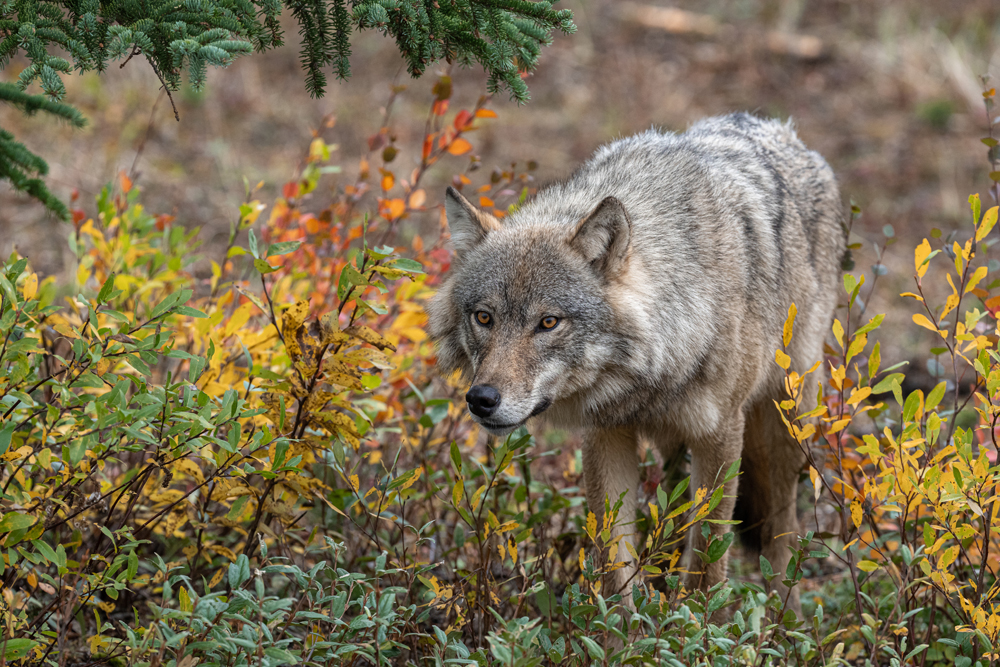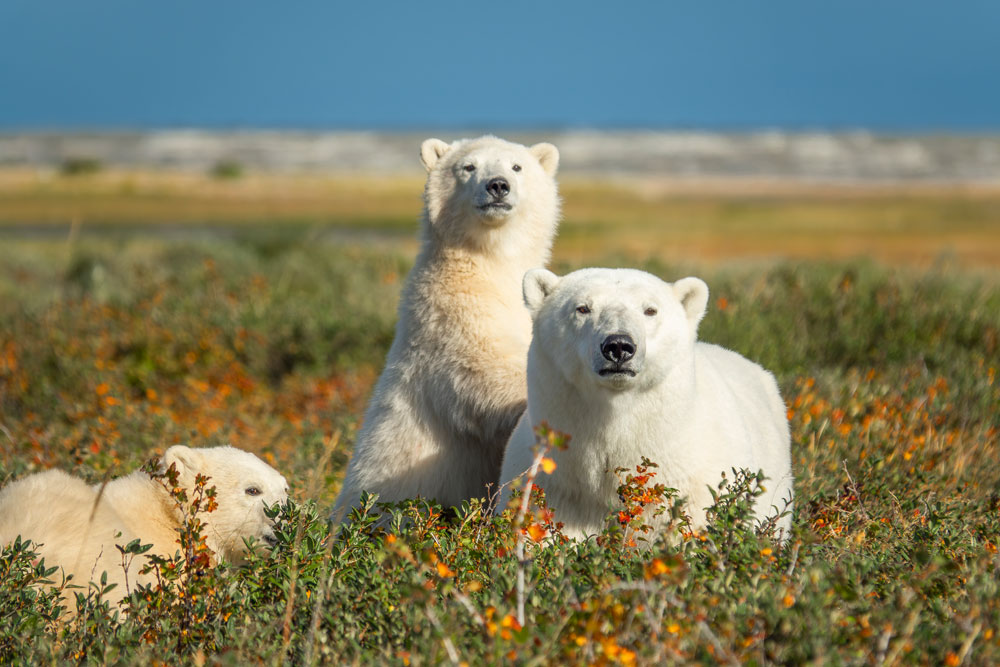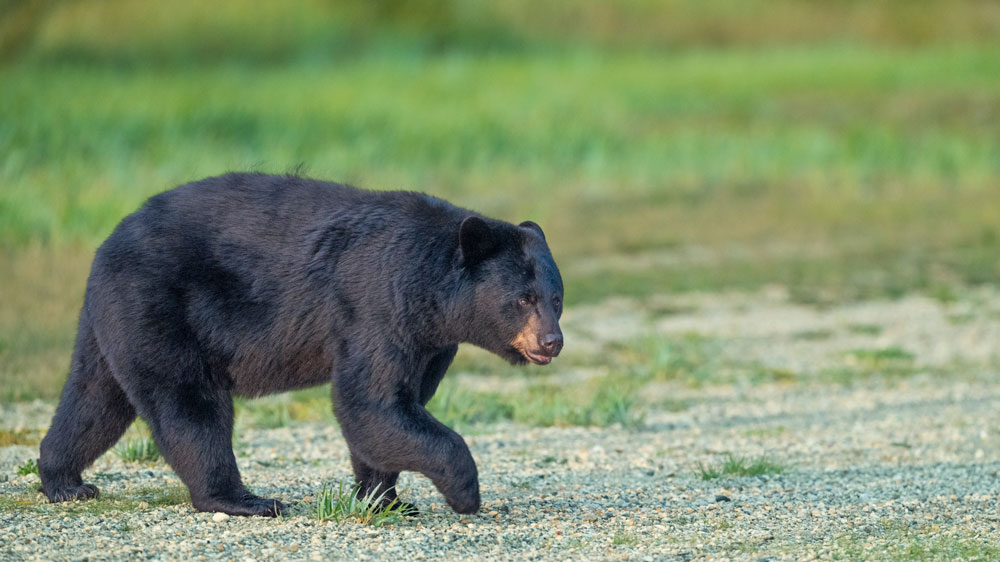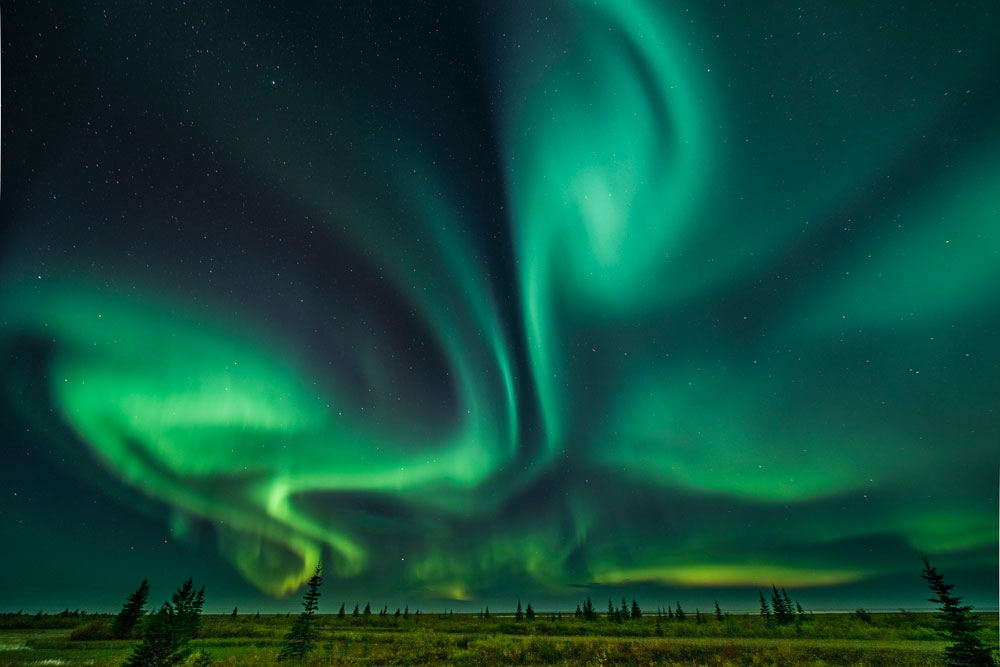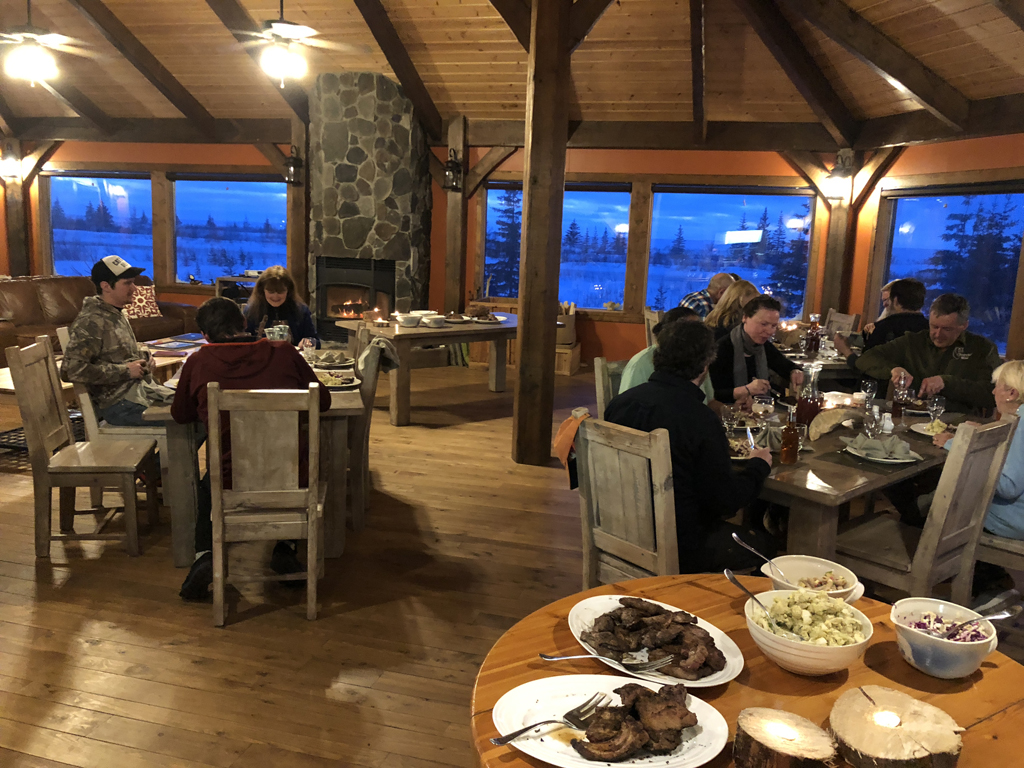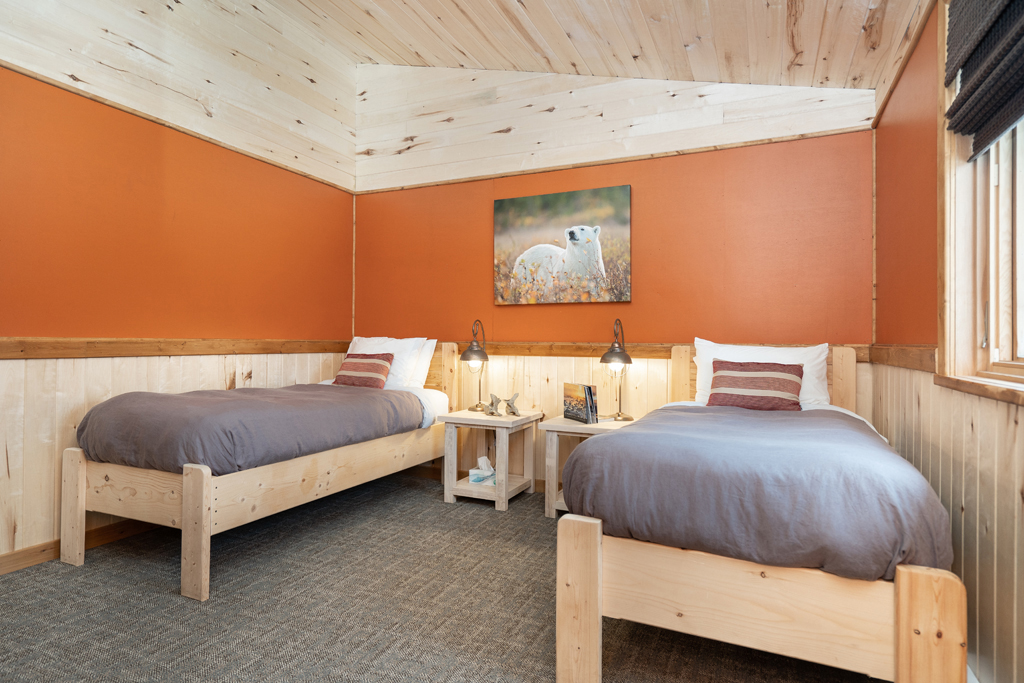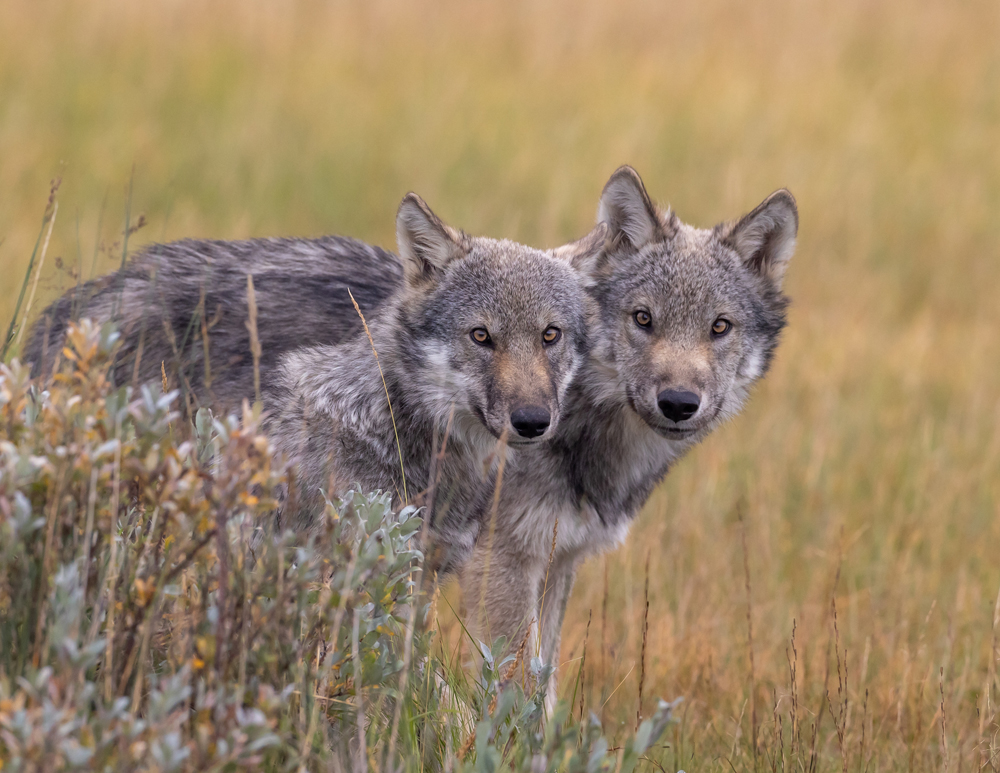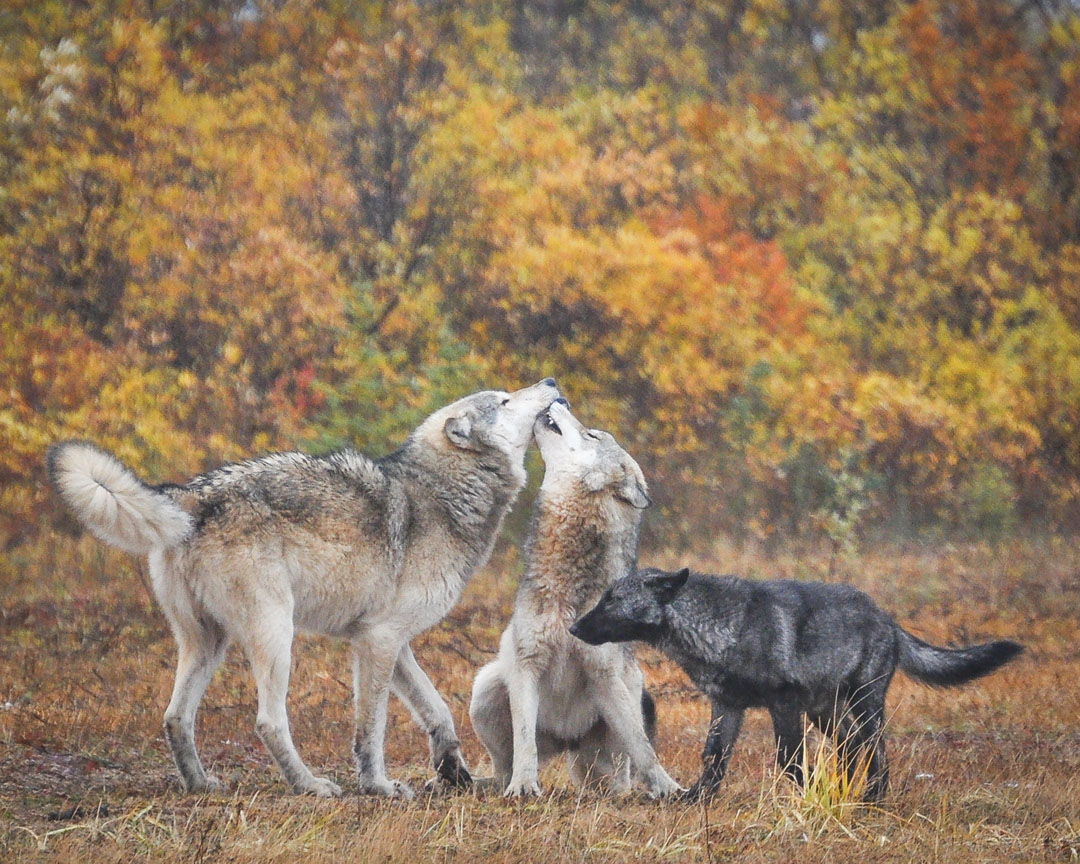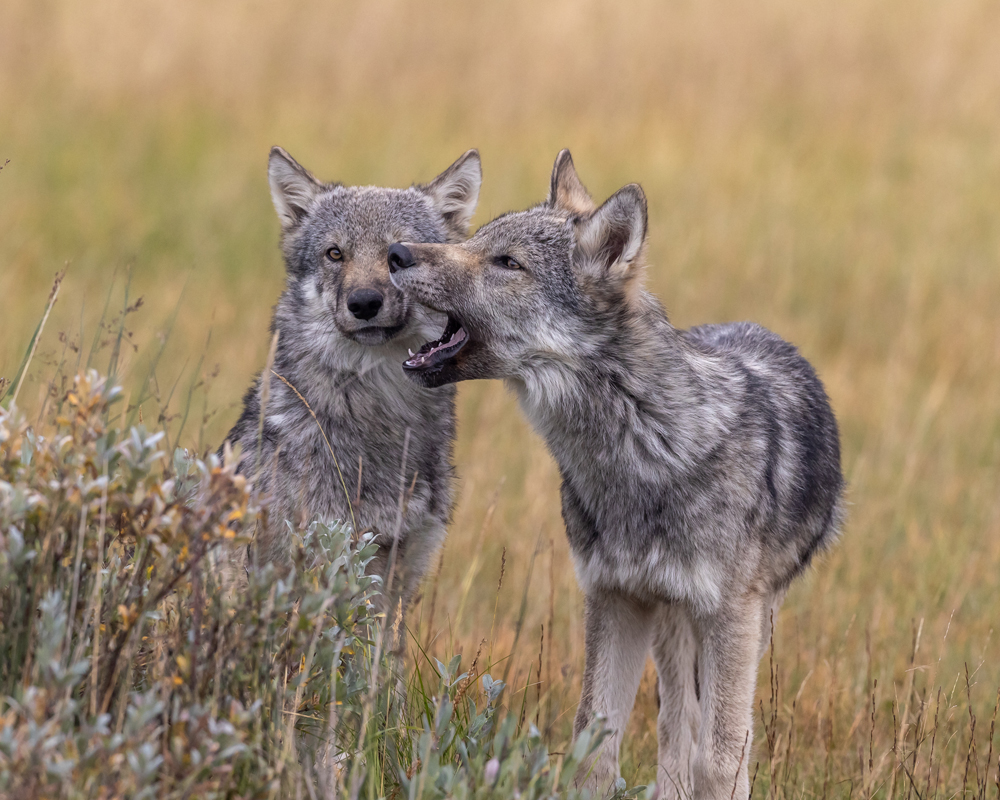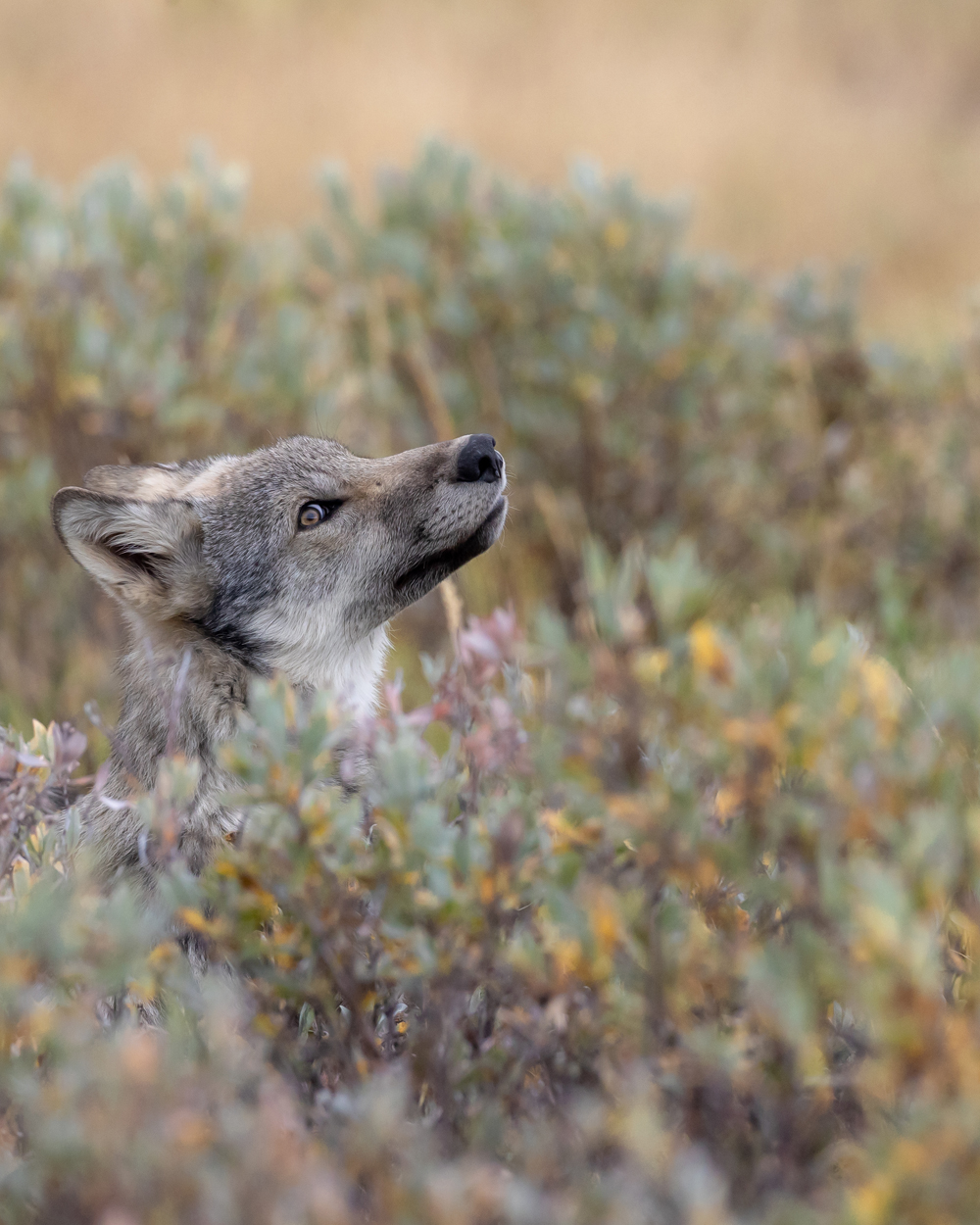Churchill Wild is thrilled to announce the launch of our new Summer Cloud Wolves of the Kaska Coast Expedition, which will run from July 24 to August 2, 2026 at Nanuk Polar Bear Lodge.
In the vast wilderness of Manitoba’s Kaska Coast, where the boreal forest meets the tidal flats of Hudson Bay, and the sweeping tundra landscapes beckon, this new summer expedition will be led by wolf expert and National Geographic photographer Jad Davenport.
Wildlife enthusiasts will have the rare opportunity to witness wolf pups in their earliest months of life as they learn the ways of the pack at “rendezvous sites” in one of North America’s most pristine wilderness areas. This territory is uninhabited and more than 50 times larger than Yellowstone National Park.
“This is a once-in-a-lifetime chance to be out on the Kaska coast, one of the wildest places in the world, and to help our citizen science field study for wolves,” said Davenport. “Guests will help us locate the rendezvous sites and dens, and hopefully spend time observing young wolves and their relationships and behaviours within the pack they will spend the next 10 years with.”
A Natural Evolution
The summer Cloud Wolves expedition represents a natural evolution of our highly successful spring and fall wolf programs, which have been running since 2021. These expeditions have earned Churchill Wild an international reputation among wildlife photographers and wolf enthusiasts for providing unprecedented, ethical encounters with wild, unhabituated wolves.
What makes our summer expedition unique is the timing. July offers a special window into wolf ecology that even our spring and fall trips can’t match.
“It’s the only time of year when if you find the pups, you’ll find the pack,” said Davenport. “And in the summer you’re getting to see the whole pack and the interactions between members. Mom comes back, goes off, dad comes back, goes off. A brother or sister, an older brother or sister from the previous litter might be there.”
Finding the Rendezvous Sites
“If the breeding pair has produced a litter, we may have a chance to observe and document the small pups as they begin exploring their world,” said Davenport. “First, we’re going to try to find the rendezvous site, which in the past has been really easy. One of the major rendezvous sites has been about two miles from the lodge.
“We’ve identified at least five rendezvous sites in the area. There’s one 3 km east of the lodge, but they have also used the runway right in front of the lodge as a site. Our job is to find these sites, stake them out, and once we find the pups, we’ll be observing the behaviour of the entire pack.”
Following the Next Generation
Wolves are constantly on the move, and regularly travel to hunt and mark their territory. “They can easily cover 80 km a day,” said Davenport. “But the fact that wolves stay at rendezvous sites makes these locations especially valuable for consistent wolf observation.
“They mate in mid-March, and the gestation period is 63 days. So you’re looking at them being born in mid-May. It usually takes them from 3-10 weeks to emerge from the den, because they’re born deaf and blind.”
By July, the young wolves have reached the “rendezvous site” stage, a time when the pack can leave the pups at these sites while the adults hunt. These sites become the social center of pack life during the summer months.
“At around three months of age, the pups are in a fascinating developmental stage,” said Davenport. “They’re establishing their hierarchy in the pack, so they’re going to be playing with each other. They’re going to be learning how to howl. They’re going to be learning how to hunt by chasing things, toys, like feathers. The parents will bring back feathers, bones, antlers. And they’re also going to learn how to be safe.”
For those who have experienced our wolf expeditions in other seasons, the summer expedition offers something completely new. “It’s neat for people that have already been up there and seen the wolves to be able to follow the next generation if they want to come back,” said Davenport. “They can follow the wolves they already know, and the pups as they grow up.”
Two Distinct Wolf Packs
The Kaska Coast near Nanuk Polar Bear Lodge is currently home to two primary wolf packs. There is the five-member Opoyastin pack led by a breeding male named Mestakaya, and the 12-member Kaskattama pack. Additionally, there are four “floaters” (two grey, two black) not currently affiliated with either pack.
“That makes for a very interesting dynamic,” said Davenport. “And it will be interesting to see what happens. We have the potential for having two litters. You never know. Mestakaya, the breeding male in the Opoyastin pack, has a new female he’s been palling around with, and they were displaying courtship behaviour. We’ve had litters born almost every year.”
The individual wolves each have distinct personalities too. “One black wolf is extremely tolerant,” said Davenport. “In March, we watched her on multiple occasions. At one point she went to sleep right in front of a group of guests. And then, when she woke up an hour and a half later, she walked right over to the guests, very close, spent time looking at them and then walked away. She was very curious about us.”
The rich social tapestry promises not only adorable pups but potentially dramatic pack dynamics.
“We saw the five-member Opoyastin pack hold off the 12-member Kaskattama pack, and chase them out of the territory in November,” said Davenport. “But those were young wolves. They’re going to be full grown now. So you have 12 fully grown wolves up against five older wolves. Who knows, it could be Game of Thrones, we don’t know what’s going to happen.”
Real Science, Real Impact
Like our other wolf expeditions, the summer program is built around citizen science. Participants will actively contribute to ongoing research by helping set up trail cameras, conducting wildlife surveys, locating and documenting kill sites, mapping territories, and participating in howl surveys.
“One of the ways we find rendezvous sites is by doing howl surveys,” said Davenport. “Because when we howl, the wolf pups will howl back, and then we can triangulate. I think this is going to be one of the most exciting programs we’ve ever offered. It’s the first time we’ve had a citizen science program during the summer.”
The data collected during the wolf expeditions contributes to a growing body of knowledge about the Cloud Wolves of the Kaska Coast. Even Dave Mech, the world authority on wolves, has shown enthusiasm for the findings from Nanuk.
A Photographer’s Dream
For photographers, the summer expedition offers unparalleled opportunities. The wolves of the Kaska Coast are completely wild, yet reasonably tolerant of human presence, creating conditions for photography that don’t exist elsewhere.
“Nanuk Polar Bear Lodge is the absolute best place on the planet to photograph truly wild wolf packs at close range,” said Davenport. “Nanuk’s Cloud Wolves have never been hunted, they’ve never been studied, they have no fear of humans. It’s the only place I’ve ever had wolves approach me when I was on foot and get to within a few metres. I had to shoot photos with a wide-angle lens. That never happens anywhere else.”
“We’ve travelled the Arctic a lot, but we have never been to a place where we’ve had such close and intimate wildlife encounters,” said Christoph Jansen of ArcticWild.net, who has been to Nanuk Polar Bear Lodge over 30 times with his wife Fabienne.
Fabienne adds a sentiment shared by many who have encountered the wolves at Nanuk. “When you get an answer from a wolf [during howling], that’s just magic.”
The Swiss couple, who have built an extraordinary portfolio of wolf images at Nanuk, find that the most meaningful photographs aren’t always the most technically perfect. “Sometimes you just have a picture you take with your heart,” said Fabienne. “That stays there forever.”
Beyond Wolves
While wolves are the stars of this expedition, the Kaska Coast offers much more. “You are in the boreal forest, but you are also on the coast of Hudson Bay,” said Christoph. “So, you have all the animals that live in either of those landscapes.”
Guests may encounter polar bears, black bears, moose, caribou (rare), wolverine, red fox, and numerous bird species from sandhill cranes to bald eagles. The Kaska Coast also boasts over 300 nights a year of Aurora activity, offering spectacular nighttime photography opportunities.
Comfort in the Wilderness
Nanuk Polar Bear Lodge, one of the original National Geographic Unique Lodges of the World when that program existed, provides an ideal base for this adventure. The lodge features a central Great Room with fireplace, panoramic windows facing Hudson Bay, and two guest wings with private en-suite rooms.
“If you imagine where you are, basically in the middle of nowhere, the infrastructure is just amazing,” said Christoph. “It’s a very cozy building, and I mean, true luxury. You get to have hot showers, you get to have warm bedrooms, you get to have three warm meals a day, very good healthy meals, homemade, all cooked here at the lodge.”
After days in the field, guests gather for happy hour presentations on wolf biology and natural history, followed by delicious dinners inspired by Churchill Wild’s award-winning Blueberries & Polar Bears cookbook series.
Limited Spots for a Rare Opportunity
To ensure the highest level of personal service and minimize impact on the wolves, this expedition is limited to only 16 guests. For wildlife enthusiasts, particularly those with a passion for wolves, this represents a genuinely rare opportunity.
“You’re going to be the first people, the first human beings these wolves ever see,” said Davenport. “And you’ll be right there with me as we’re watching them and photographing them and filming them and learning about them. What’s their behaviour like in summer? We don’t know. We’ve only really been studying them in winter.”
Tammy Kokjohn, who was on the Hudson Bay Odyssey at Nanuk in the fall of 2023, hit the triple with polar bears, black bears, and wolves on her trip, and was especially enamoured by the wolf pack interactions and the puppies.
The wolf pack isn’t always at the lodge, as it has a vast area to roam along the Hudson Bay coast and back into the boreal forest, but when they are there, the interactions can be exceptional. It showed in Kokjohn’s photographs.
“With the wolves we had such great sightings,” said Kokjohn. “We got to sit with the whole pack and watch them sleep, and then they would get up, and the interactions with the pups… I didn’t want it to end.
“I’m pretty certain we saw the wolves every day we were there. And to get to spend time with the pups was even more special. Honestly, it was like a dream come true, just to sit there and watch the wolves.
“It was truly incredible. Something I’ll never forget.”
The Summer Cloud Wolves of the Kaska Coast Expedition (July 2026 itinerary on right side of page) runs from July 24 to August 2, 2026 at Nanuk Polar Bear Lodge. The all-inclusive price is $25,495 CAD per person (plus 8.5% tax), based on double occupancy. Since there are only 16 spots available on this exclusive expedition, we recommend booking early to secure your place.
For more information or to book your spot, please contact Churchill Wild here, email us at info@churchillwild.com, or call the office at 1 (866) UGO-WILD (846-9453).
A Hudson Bay Odyssey at Nanuk Polar Bear Lodge


